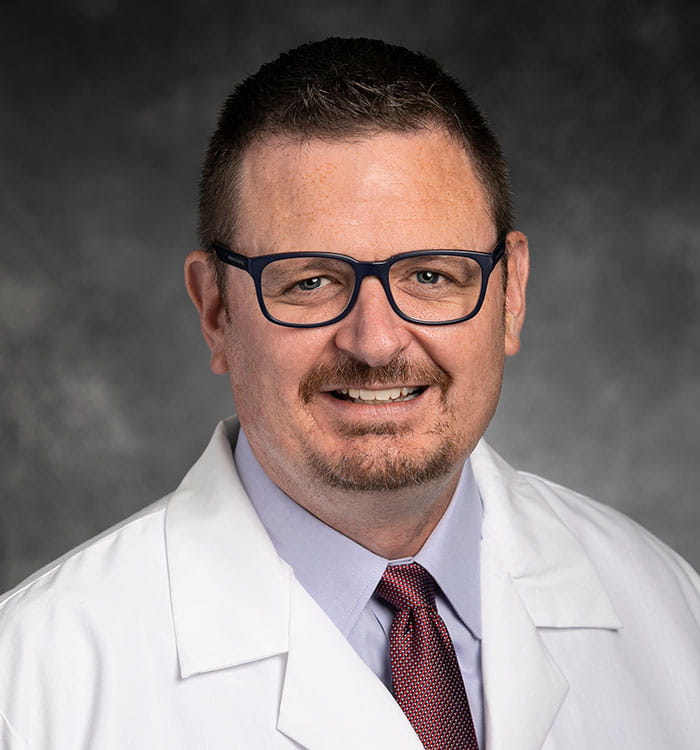Critical Care Research at UH an Emerging National Leader
June 24, 2025
UH Clinical Update | June 2025
In the world envisioned by “Star Trek,” the starship’s doctor manages the health needs of the crew with a hand-held device called a tricorder, doing a quick scan and getting results to rapidly guide treatment.
At University Hospitals, researchers in critical care medicine are working to bring this futuristic concept to life today, specifically targeting more timely and effective care for people with sepsis and other life-threatening conditions. A group led by Kenneth Remy, MD, Director of Critical Care Research and Ellery Sedgwick, Jr. Chair and Distinguished Scientist in Cardiovascular Research, was recently invited by the National Heart, Lung and Blood Institute of the NIH to submit a proposal, based on the strength of its previous work.
 Kenneth Remy, MD
Kenneth Remy, MD
“It's looking at the immune system in patients and then developing a randomized control trial using these findings to actually treat them with the appropriate drug,” Dr. Remy says. “That’s exciting because this would be the first in class ever been done in the United States that uses laboratory-based testing for the immune system in real time.”
The goal is to develop novel ways to evaluate patients’ immune systems and then rapidly treat them, Dr. Remy says.
The project also relies on high-level endotyping strategies led by Dr. Douglas Brubaker (CWRU; Pathology), assisted by machine learning.
“We take blood tests against clinical variables in different demographic variables put them all together to understand how those things will influence a patient at a certain time point,” he says. “We create endotypes based off of these biomarkers and use that against their clinical variables to determine predictive analytics, as well as response to therapies.”
Dr. Remy and colleagues at UH Rainbow Babies & Children’s Hospital are also taking a similar approach to pediatric patients with bronchiolitis. Dr. Remy and Steven Shein, MD, Division Chief of Pediatric Critical Care Medicine at UH Rainbow, began a consortium three years ago with Akron Children’s Hospital, Cleveland Clinic and MetroHealth, with the goal of translating research findings from Dr. Remy’s lab into next-level evaluations for kids with critical illness. The team is unique in the United States to be funded by the Society of Critical Care Medicine to do this work.
“We've leveraged our consortium with our high-level immune phenotyping platform to be able to do this, and so we are currently amidst that trial right now in children,” Dr. Remy says.
The critical care research team at UH is also active in large research networks, as well as industry-sponsored clinical trials.
With all this work, Dr. Remy says UH is well-positioned to continue contributing to the ongoing work on sepsis and other life-threatening conditions.
“When it comes to trauma and critical care research, UH and Case Western are among the new leaders in this country right now,” he says. “With team science, I think that we are at the precipice for some substantial discoveries in how we understand the biology of the disease and how we respond to that biology across different individuals. And how we're developing new targeted therapies, or repurposing therapies that could be beneficial when administered to the right populations. I think we're almost there. We've got a dynamic team of folks, both at Case and at University Hospitals, who are leading this charge. Many of these members are part of the Blood, Heart, Lung, and Immunology Research Center. With such a breadth of talent across departments, specialties, and campus, it’s an exciting time to be here. Imagine with this talent, coupled with Northeast Ohio partnerships in industry, philanthropy and academia, the substantial impact we can make in critical illness for children and adults battling disease.”


